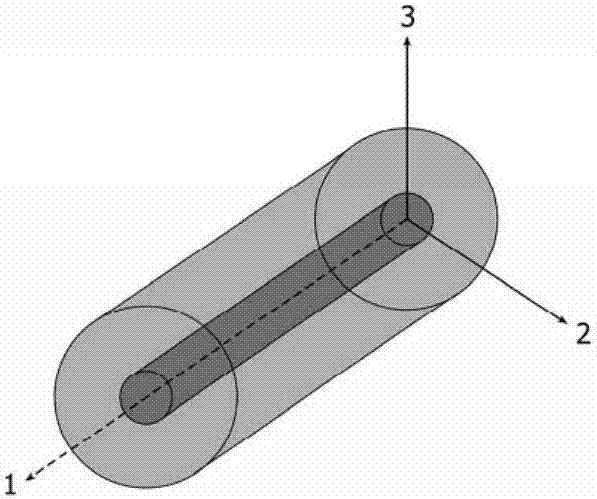A Multiscale Modeling Method for Skeletal Muscle Mechanical Behavior
A technology of skeletal muscle mechanics and modeling methods, which is applied in the field of multi-scale modeling of skeletal muscle mechanical behavior, and can solve problems such as unrealization and simulation
- Summary
- Abstract
- Description
- Claims
- Application Information
AI Technical Summary
Problems solved by technology
Method used
Image
Examples
specific Embodiment approach 1
[0026] Specific embodiment one: a kind of multi-scale modeling method of skeletal muscle mechanical behavior comprises the following steps:
[0027] Step 1: Determination of the position and posture of the muscle fibers;
[0028] Step 2: Establish a macroscopic geometric model of skeletal muscle and a microscopic geometric model of skeletal muscle according to step 1;
[0029] Step 3: meshing the geometric model established in step 2;
[0030] Step 4: Carry out modeling of skeletal muscle electrophysiological characteristics according to Step 3;
[0031] Step 5: Perform multi-scale calculation between cells and muscle tissue according to Step 3 and Step 4;
[0032] Step 6: Establish a multi-scale biomechanical model of skeletal muscle according to Step 5;
[0033] Step 7: Predict muscle strength according to Step 6.
[0034] The multi-scale model of skeletal muscle of the present invention and the overall design scheme of simulation are as follows: Figure 5 shown.
specific Embodiment approach 2
[0035] Embodiment 2: The difference between this embodiment and Embodiment 1 is that the specific process of determining the position and posture of the muscle fibers in the step 1 is:
[0036] In the model analysis, the material and the muscle fiber orientation are defined by the element coordinate system. Establish a Cartesian coordinate system on the muscle fiber voxel, the radial direction of the voxel is along the axial direction of the muscle fiber, and the other two coordinate axes of the voxel are located in a plane perpendicular to the muscle fiber. This Cartesian coordinate system is the local coordinate system of the geometric model. Such as figure 2 As shown; the global coordinate system is placed at the geometric center of the skeletal muscle, and the position and posture of the muscle fiber are determined through the connection relationship between the local coordinate system and the global coordinate system, as shown in image 3 shown.
[0037] Other steps an...
specific Embodiment approach 3
[0038] Specific embodiment three: the difference between this embodiment and specific embodiment one or two is: the specific process of setting up skeletal muscle macroscopic geometric model and skeletal muscle microscopic geometric model in the described step 2 is:
[0039] Step 21: Establish a macroscopic geometric model of skeletal muscle
[0040] The medical image volume data of the muscle is acquired by MRI equipment. After the medical image is acquired, the image is preprocessed. The preprocessed image is segmented. After the image is segmented, the 3D reconstruction is performed to obtain the macroscopic geometric model of the skeletal muscle; the geometric modeling of the skeletal muscle is performed. The steps are as figure 1 shown.
[0041] Step 22: Establish a microscopic geometric model of skeletal muscle
[0042] Through diffusion tensor magnetic resonance DT-MRI, microscopic information such as fiber angle can be obtained, and the actual fiber distribution in p...
PUM
 Login to View More
Login to View More Abstract
Description
Claims
Application Information
 Login to View More
Login to View More - R&D
- Intellectual Property
- Life Sciences
- Materials
- Tech Scout
- Unparalleled Data Quality
- Higher Quality Content
- 60% Fewer Hallucinations
Browse by: Latest US Patents, China's latest patents, Technical Efficacy Thesaurus, Application Domain, Technology Topic, Popular Technical Reports.
© 2025 PatSnap. All rights reserved.Legal|Privacy policy|Modern Slavery Act Transparency Statement|Sitemap|About US| Contact US: help@patsnap.com



